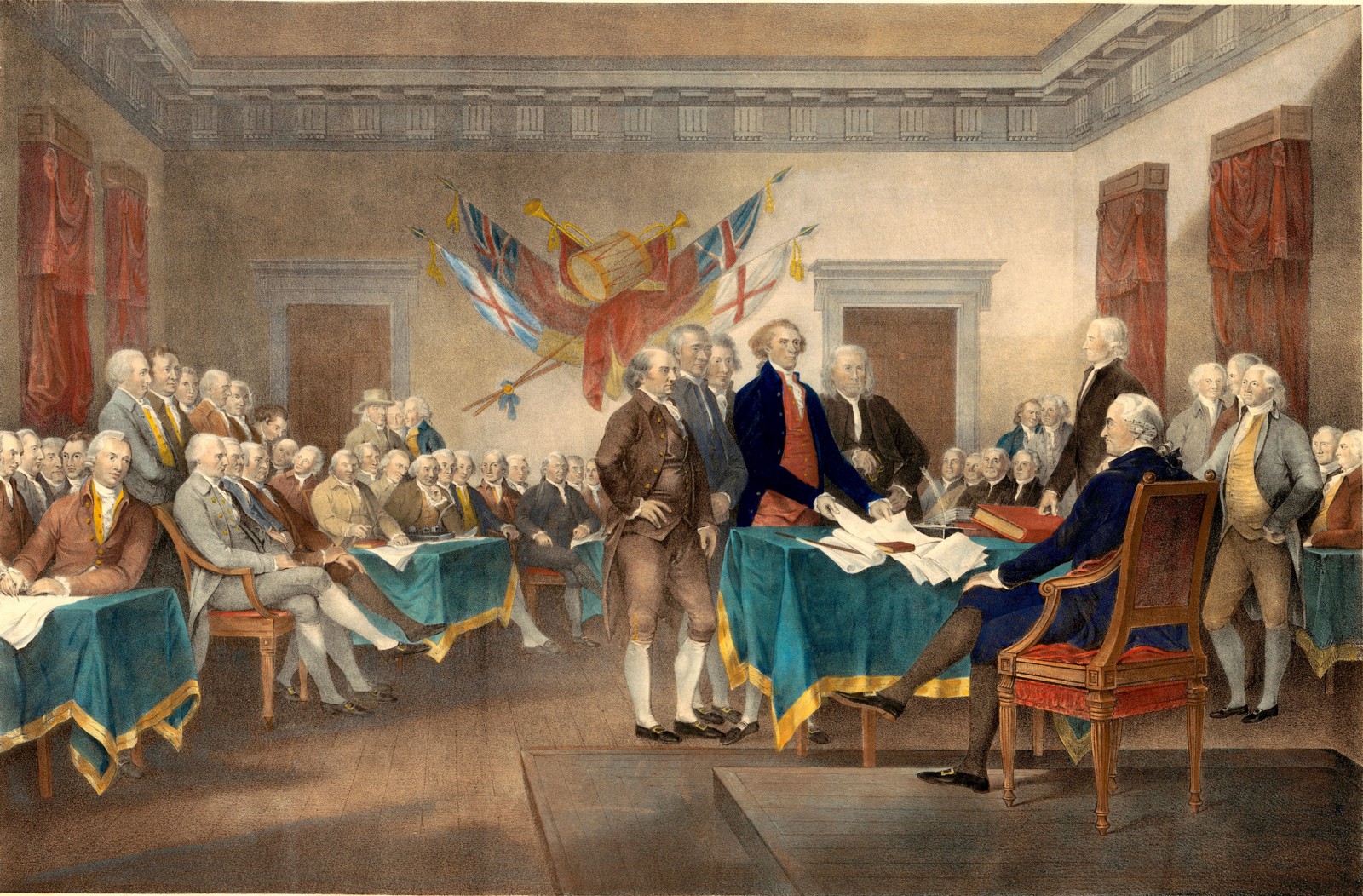The American Colonies Act 1766 (6 Geo 3 c 12), commonly known as the Declaratory Act, was an Act of the Parliament of Great Britain, which accompanied the repeal of the Stamp Act 1765 and the changing and lessening of the Sugar Act. Parliament repealed the Stamp Act because boycotts were hurting British trade and used the declaration to justify the repeal and save face. The declaration stated that the Parliament’s authority was the same in America as in Britain and asserted Parliament’s authority to pass laws that were binding on the American colonies.

Boston Tea Party
The Boston Tea Party was a political protest that occurred on December 16, 1773, at Griffin’s Wharf in Boston, Massachusetts. American colonists, frustrated and angry at Britain for imposing “taxation without representation,” dumped 342 chests of British tea into the harbor. The event was the first major act of defiance to British rule over the colonists. It showed Great Britain that Americans wouldn’t take taxation and tyranny sitting down, and rallied American patriots across the 13 colonies to fight for independence.
Second Continental Congress
In 1775, all thirteen colonies elected delegates to represent them at the Second Continental Congress. This body had a very different purpose from the first. Rather than just trying to demonstrate unity, this Congress was actually designed as a form of government to organize and direct the colonies. After the battles of Lexington and Concord, it was pretty much evident that the colonists could expect an all-out war with England. This colonial government was meant to bring them together to fight. So, one of the first actions of the Second Continental Congress was to authorize the creation of a Continental Army. They filled it with soldiers from each colony, and placed it under the leadership of General George Washington.
While the direct goal of the Second Continental Congress was to prepare for war, the delegates weren’t actually talking about independence just yet (aside from a few radical voices). For the most part, they were still fighting for their rights as English citizens, and so in July of 1775 they drafted a direct letter to King George III called the Olive Branch Petition. In the appeal, the delegates declared their loyalty to England and asked for a peaceful solution to this conflict. This was a big deal, as it effectively demonstrated that this Congress considered itself to be a functioning government body representing the colonies. King George III responded by declaring the colonies to be in rebellion, and mobilizing troops to invade.

The Declaration of Independence
When armed conflict between bands of American colonists and British soldiers began in April 1775, the Americans were ostensibly fighting only for their rights as subjects of the British crown. By the following summer, with the Revolutionary War in full swing, the movement for independence from Britain had grown, and delegates of the Continental Congress were faced with a vote on the issue. In mid-June 1776, a five-man committee including Thomas Jefferson, John Adams and Benjamin Franklin was tasked with drafting a formal statement of the colonies’ intentions. The Congress formally adopted the Declaration of Independence–written largely by Jefferson–in Philadelphia on July 4, a date now celebrated as the birth of American independence.
